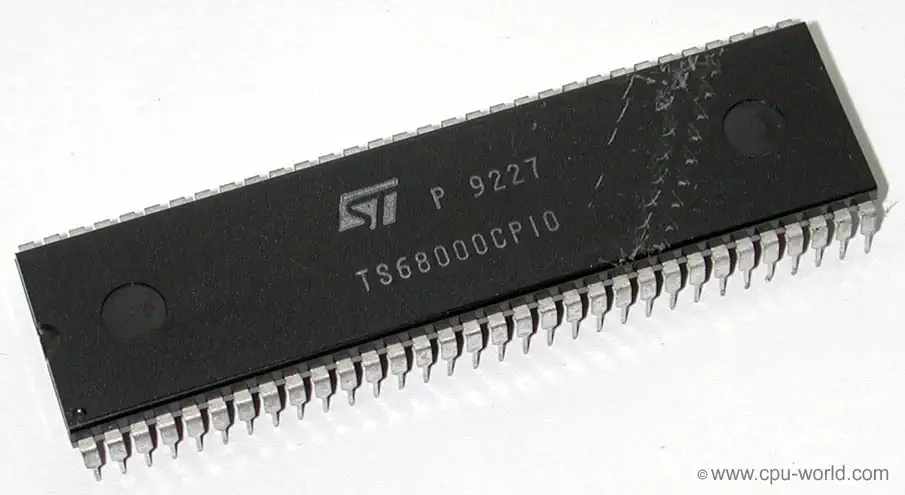
Amiga 3000, fully 32 bit
The Amiga 3000 was released in 1990 as the successor of the Commodore Amiga 2000. It is faster, has improved graphics, and the operating system is revised. The previous versions of the Amiga all shared the same underlying architecture as the Amiga 500. The A3000 however has a lot of improvements.
For starters, there is a new CPU: the Motorola 68030 32-bit processor, paired with a 68882 math co-processor. The system memory is now fully 32-bit, increasing the speed of the machine tremendously. A new Zorro III expansion slot standard provides more powerful expansion capabilities.
The Operating system of the A3000 is AmigaOS, but commodore produces a variant, the A3000UX that is bundled with the UNIX system V operating system.
An enhanced system the A3000+ was prototyped with a new AGA chipset and an AT&T DSP3210 signal processing chip, but this system was never released. Instead, Commodore decided to release the A4000 as the A3000's successor.
Motorola 68000 CPU Family
The Motorola 68000 is a 16/32-bit microprocessor that was first released in 1979. It was widely used in computers and other electronic devices during the 1980s and early 1990s. The 68000 was known for its advanced architecture, which included a 32-bit internal bus and a 24-bit address bus, allowing it to access up to 16 megabytes of memory. This made it more powerful than many other processors of its time, such as the Intel 8086 and Zilog Z80. It was also designed to be highly modular and expandable, with a large number of on-chip and off-chip peripherals.
Some of the most famous and successful computers that used the 68000 was the Commodore Amiga and the Atari ST, both of which were popular in the home and personal computer markets. Additionally, it was also used in workstations, such as the Sun 3 and Apollo DN3000, and in a wide variety of embedded systems and industrial control systems. The 68000 was also used in the Macintosh, the first model of the Macintosh was powered by a Motorola 68000 CPU. The processor was eventually succeeded by the 68020 and 68030, which offered improved performance and additional features.
The 68000 has a 32-bit instruction set, with 32-bit registers and a 16-bit internal data bus. The address bus is 24-bit and does not use memory segmentation, making it easier to address memory. There are three ALU's (Arithmetic Logic Unit), two for calculating addresses, and one for data, and the chip has a 16-bit external address bus.
The 68000 architecture was expanded with 32-bit ALUs, and caches. Here is a list with some 680x0 versions and their major improvements:
- 68010 - Virtual memory support
- 68020 - 32-bit ALU & Instruction Cache
- 68030 - On-Chip MMU, 2x 256 byte cache
- 68040 - 2x 4K Cache, 6 stage pipeline, FPU
- 68LC040 - No Floating Point Unit (FPU)
- 68060 - 2x 8K Cache, 10 stage pipelinet

Source: WikiPedia - Motorola 6800
Source: WikiPedia - 68000 Series
RAM max: 9MB Sound Chip Paula - 4 DMA-driven 8-bit PCM channels Sound 4x8-bit channels @28 kHz stereo Display Chip Denise Display 320x200 in 4096 colors
640x200 in 16 colors
1280x200 in 4 colors
Vertical resolution could be doubled using interlacing. Best Color 12-bit color, 4096 simultanuous Best Graphics 1280x400i (Enhanced Chipset Only) Sprites none System OS AmigaOS 3.0 Storage Dual Internal 3.5" Floppy Disk Drives. Original Price $3,379

